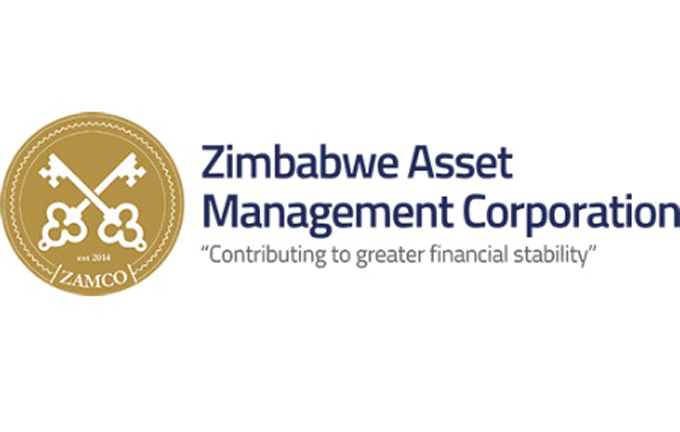
By Vince Musewe
It was Mark Twain who said “get your facts first then, you can distort them as you please!”
At the outset, we need to understand the key purpose of the Zimbabwe Asset Management Company (Zamco).
Zamco was established in 2014 by the Reserve Bank of Zimbabwe (RBZ) with the technical assistance of the International Monetary Fund in order not only to address the emerging crisis in the banking sector from Non-Performing Loans (NPLs), but to also ensure that Zamco would be established in line with best international practice.
The NPL ratio had then risen 20,45%, which was much higher than internationally acceptable threshold of 5%.
It is instructive to note that similar structures to deal with NPLs have been successfully set up internationally, for example, in Nigeria, Malaysia, China, Indonesia, Thailand, Sweden, Ireland and the United States, among others.
When NPLs are too high, this poses a systemic risk to the banking sector and the economy as a whole because banks are not able to collect loans granted and this puts a squeeze on their lending operations.
It soon becomes a serious risk factor on viability and access to credit for both the banks and borrowers.
- Chamisa under fire over US$120K donation
- Mavhunga puts DeMbare into Chibuku quarterfinals
- Pension funds bet on Cabora Bassa oilfields
- Councils defy govt fire tender directive
Keep Reading
High NPLs, therefore, ultimately result in the deterioration of the country’s credit rating, lack of access to credit lines and increased borrowing costs.
This further stifles commerce and economic growth.
NPLs are non-performing loans granted by banks in their normal course of business and the recovery of these loans has, for many reasons, become almost impossible (bad debts).
This would mean the assets (under debtors on the banks’ balance sheet) become over stated and must, therefore, be adjusted accordingly to expunge toxic debt.
Zamco then came into the picture and acquired the NPLs from banks on a willing buyer willing seller basis.
The banks themselves identified the NPLs, which were dragging or spoiling their balance sheets and posing risks, Zamco then “bought” these assets for an agreed consideration normally below book value, which was then financed by 10 to 16 year term treasury bills.
Zamco acquired $1.13bn of bad debt from banks.
For the avoidance of any doubt, Zamco did not acquire each and every NPL offered to it by the banks, but the NPL had to meet set criteria first.
These include security of mortgage bonds, no insider loans and underlying obligors must have recovery prospects.
After which due diligence, credit assessment, collaterals valuation and loan pricing were performed.
Note that this process of loan acquisition by Zamco had nothing to do with the borrower, it is an arrangement between the banks and Zamco.
It is the bank that owns the asset i.e. the NPL and thus the decision to sell NPLs to Zamco rests with the bank alone and not the borrower.
It is also important to note that these loans were not written off or forgiven, because those who owed the banks still owe to Zamco whose responsibility becomes to eventually recover the loans. To achieve that Zamco has several approaches.
Zamco, once it has taken over the loan, applies various resolution techniques to maximise recovery on these loans.
This is the point where the borrowers come in, or in other words, engagement with borrowers commences.
As part of resolution of the NPLs, Zamco assists those distressed companies with prospects for turn-around by restructuring their debts through for example reduction of interest rates and extension of the loan repayment period thus reducing the immediate interest burden of the companies.
Other resolution methods include; debt to equity conversion, debt asset swap, negotiated settlement at a discount, schemes of arrangements to restructure loans, disposal of NPL to investors, foreclosure through forced sale of collateral and liquidations among others.
The point being that Zamco pursues what it deems to be the best yet patient route to recover the debts owed.
Debts are not written off or forgiven because they are now at Zamco.
All things failing, Zamco remains with the option to take the necessary legal action to recover loans through foreclosures.
By statute Zamco is a special purpose vehicle (SPV) with a specified shelf life of 10 years, meaning that by 2025 Zamco will wind up its operations.
This is the common procedure on all public asset management companies and is meant to prevent moral hazard in the banking sector.
We are now four years away from the expiry of the life of Zamco and it was recently announced that Zamco has now fully repaid the $1.2bn loan it received from government to acquire NPLs from banks.
Latest bank statistics show that the NPL ratio to total loans remained low at .55% as at June 30 2021.
Clearly Zamco has achieved its mandate. I do remember there was lots of acrimony where it was claimed that Zamco was merely there to forgive and pass on bad debt of selected politicians onto the taxpayer.
The facts are that NPLs were loans granted by banks in their normal course of business and were not part of some grand scheme by the RBZ or the government to write-off debts of some politicians.
It must be noted that a number of banks which closed during the period 2003 to 2005 were partly as a result of high exposure to NPLs, particularly insider loans.
By taking over NPLs from the banking sector, Zamco therefore prevented the calamity which happened in 2003 -2005 from recurring.
Clearly compared to other countries Zamco has performed very well above average and can indeed be called a success.
It was Mark Twain who said “get your facts first, then you can distort them as you please!”
- Vince Musewe is an independent economist and you can contact him on vtmusewe@gmail.com
- These weekly articles are coordinated by Lovemore Kadenge, an independent consultant, past president of the Zimbabwe Economics Society and past president of the Institute of Chartered Secretaries & Administrators in Zimbabwe. Email: kadenge.zes@gmail.com and Mobile No. +263 772 382 852









